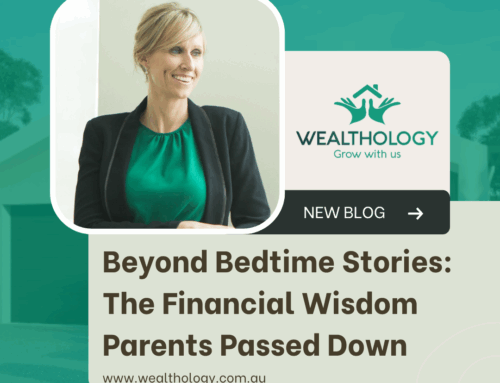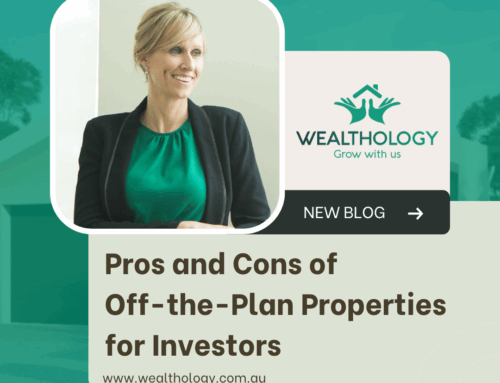In the dynamic world of real estate investment, success often hinges on the ability to harness powerful financial tools. One such tool that plays a pivotal role in shaping property investment strategies is compound growth.
In this blog, we will demystify the concept of compound growth, exploring its significance, the mechanics behind it, and how it emerges as a key player in the realm of property investment.
Understanding Compound Growth
At its core, compound growth involves the exponential increase of an investment’s value over time, as both the initial principal and the accumulated interest earn returns. In the context of property investment, this means that not only does the property appreciate in value, but the appreciation itself becomes an earning asset, fostering a compounding effect. A little bit like magic…
The Significance in Property Investment
Property investment is a long-term game, and compound growth aligns seamlessly with this philosophy. When strategically employed, it has the potential to turn a modest initial investment into a substantial asset.
Let’s delve into the factors that make compound growth a key player in property investment strategies.
- Accelerated Wealth Accumulation
Compound growth has a magical quality of accelerating wealth accumulation. As property values appreciate over time, the compounded returns contribute significantly to the overall growth of the investment. This acceleration becomes especially pronounced in the later stages of the investment period, creating a snowball effect that propels wealth to new heights.
- Mitigating Risks
In the volatile world of real estate, market fluctuations are inevitable. Compound growth acts as a cushion, mitigating the impact of downturns by allowing the investment to recover and thrive in the long run. This resilience is a crucial element in the risk management toolkit of seasoned property investors.
- Building Equity
Equity is the stake an investor holds in a property over and above any mortgage or other claims. Compound growth not only enhances the property’s overall value but also contributes to the growth of equity. This built-up equity can be leveraged for future investments or used to secure financing for other ventures.
Mechanics of Compound Growth in Property Investment
Now that we understand the importance of compound growth, let’s unravel the mechanics behind its application in property investment strategies.
- Appreciation of Property Value
The primary driver of compound growth in property investment is the appreciation of property value. As the property’s market value increases over time, the compounded returns on the initial investment also rise, creating a compounding effect that fuels the growth of the overall asset.
- Reinvestment of Returns
A strategic aspect of compound growth involves reinvesting the returns generated by the investment. By plowing back profits into the property or additional real estate ventures, investors can capitalise on the compounding effect, amplifying the growth trajectory.
- Long-Term Investment Horizon
Compound growth thrives in a long-term investment environment. Patience is key, as the compounding effect becomes more pronounced over extended periods. Investors who adopt a patient, long-term perspective are better positioned to reap the full benefits of compound growth.
Real-Life Application: Success Stories
To illustrate the real-world impact of compound growth in property investment, let’s explore a couple of success stories.
Case Study 1: Jill’s Smart Investment
Jill, a savvy investor, purchased a property in a high growth neighbourhood. Over the years, the area experienced significant development, leading to a surge in property values. Through strategic renovations and improvements, Sarah increased the property’s appeal, contributing to its growth in value.
As the property value grew, so did Jill’s equity. By reinvesting the rental income and capitalising on the compounded returns, Jill expanded her property portfolio. Compound growth played a pivotal role in transforming Jill’s initial investment into a lucrative real estate empire.
Case Study 2: Ken’s Long-Term Vision
Ken, an experienced investor, recognised the potential of a developing urban area. Despite initial market fluctuations, Ken held onto his property, very confident in its long-term growth prospects. Over the years, the area flourished, and Ken’s property appreciated significantly.
The compounded returns not only boosted the value of Ken’s initial investment but also provided him with a steady stream of income. Ken leveraged this income to acquire additional properties, creating a diversified portfolio. His success story highlights the enduring power of compound growth in property investment.
Strategies for Maximising Compound Growth
To harness the full potential of compound growth in property investment, consider implementing the following strategies:
- Strategic Property Selection: Choose properties in areas with high growth potential, considering factors such as infrastructure development, job opportunities, and overall market trends.
- Regular Assessments and Adjustments: Periodically assess your property portfolio and make adjustments as needed. This may involve renovations, upgrades, or strategic divestment and reinvestment. At Wealthology we like to reassess at least every 12 months or so.
- Reinvestment of Profits: Instead of cashing out profits, reinvest them in additional properties or improvements to existing ones. This accelerates the compounding effect and enhances overall portfolio growth.
- Diversification: Spread your investments across different types of properties and geographic locations to minimise risk and maximise potential returns.
How is interest compounded?
While the interest rates offered on savings accounts can fluctuate, the following illustration effectively explains the principle and its application to property with capital growth.
Consider a savings account with a 10 percent interest rate where you invest $100. At the end of the first year, you accumulate $10 in interest, resulting in a total balance of $110.
Moving into the second year, you now earn another 10 percent interest, not just on the initial $100, but on the expanded sum of $110.
With each passing year that you retain the funds, the interest earned continues to grow, creating a compounding effect that steadily increases the total amount. This showcases the potential for your money to accumulate more substantial interest over time as it compounds into a larger sum.
What about property investment?
Let’s consider a scenario where you acquire a property for $400,000. In the first year, it experiences an 8 percent growth, resulting in an increase of $32,000. This growth rate persists each subsequent year.
Moving into the second year, your property, now is valued at $432,000, grows to $466,560. This appreciation opens up the opportunity to purchase another investment property, creating a portfolio with multiple properties, each subject to compound growth and generating profits for further investment.
While these figures are for illustrative purposes, they underscore the potential for cultivating a substantial property portfolio valued in the millions. By the tenth year, your portfolio could easily reach five million dollars, with a consistent 8 percent growth rate contributing an additional $400,000 in equity.
The enduring benefit of holding onto your properties is the compounding effect on their value. Year after year, this process leads to a remarkable accumulation of wealth, yours to claim upon selling a few properties to settle any outstanding debts.
Consider the simple reality that owning multiple properties not only yields continuous growth but also provides a steady cash flow as rental income increases over time.
Starting with a mere $50,000 as a deposit to purchase a $400,000 property, in just a decade, you could find yourself in possession of a five-million-dollar asset portfolio. Perhaps even more, given the right circumstances.
Compound growth stands as a formidable force in the world of property investment, capable of transforming modest investments in to substantial wealth. By understanding its significance, grasping the mechanics behind its application, and learning from real-life success stories, investors can leverage compound growth as a key player in their property investment strategies.
As the saying goes, “Compound interest is the eighth wonder of the world. He who understands it, earns it; he who doesn’t, pays it.”
In the realm of property investment, those who embrace and master compound growth are well-positioned to navigate the journey to financial prosperity. Ready to unlock the secrets of compound growth? For those intrigued by this, reach out to Leonie at leonie@wealthology.com.au for more tailored insights. 📩
Discover more insights on these topics:
- Avoid the All Monies Mortgage Clause and Invest Safely
- The Benefits of Buying Brand New Property | A Comprehensive Guide!





